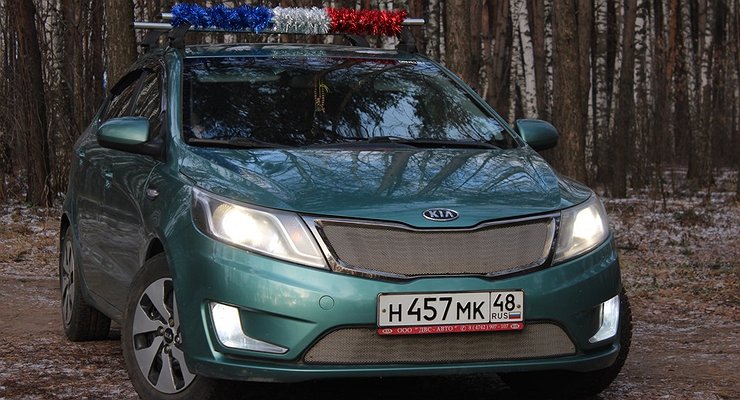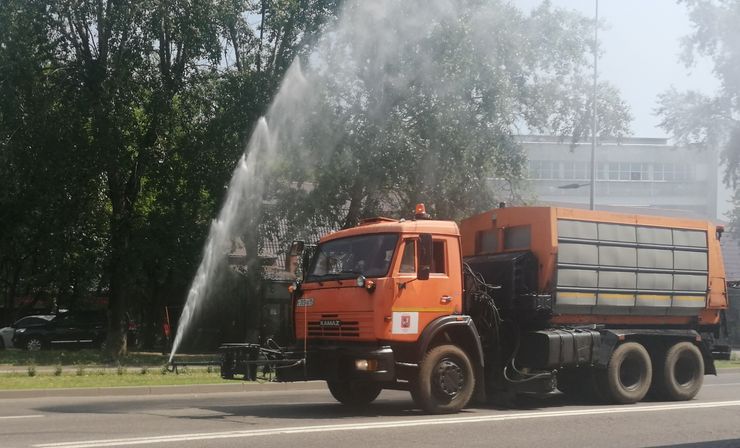Blue or blue-red: which flashing lights are cooler?
- August 25, 2022
- 0
Today, the roads are full of special equipment and cars with flashing beacons. Understanding its meaning is easy. Orange – for special equipment, blue – for ambulances, fire
Today, the roads are full of special equipment and cars with flashing beacons. Understanding its meaning is easy. Orange – for special equipment, blue – for ambulances, fire

Depending on the color of the flashing lights, their owners get certain preferences on the public road. But how do you find out who and what is allowed when a colored chandelier shows off the roof of his car?
Maybe let’s start with regular yellow or orange beacons. These are installed on special equipment used for road or infrastructure maintenance, or on vehicles carrying dangerous or oversized loads. These light signals do not provide any benefit to the driver on whose vehicle they are installed.
In other words, these flashing lights are intended to alert other road users to the danger – special vehicles can drive too slowly or even stand still during certain operations. And there can be difficulties in overtaking them. In general, yellow and orange are warning colors.
There are white flashing lights. These can be seen on postal service cars, collector cars, and on equipment used in the transportation of other goods of a certain value. However, such chandeliers should be turned on only in exceptional cases. For example, in case of emergency – a robbery or a chase. At the same time, cars with such flashing lights have the ability to move freely along pedestrian areas and sidewalks when the situation requires it.
Blue flashing lights – ambulance, Ministry of Emergency Situations, police, etc. With a blue flashing light and even a siren on, the car is given the opportunity to pass the intersection at a red traffic light, enter the oncoming lane, etc.
But blue-red chandeliers are installed on the cars of employees of services responsible for regulating traffic, such as the traffic police or the VAI. Unlike cars with a blue flashing light, vehicles with a blue-red signal can also guide the masts. The sound signal turned on at the same time gives certain advantages over other participants in the movement of the entire column.
In other words, blue-red flashing lights on the road have more advantages than others. The only ones standing above the blue-red signals on the roof are traffic cops. The latter are charged with limiting the rights of all vehicles, regardless of which chandelier they have on the roof.


Depending on the color of the flashing lights, their owners get certain preferences on the public road. But how do you find out who and what is allowed when a colored chandelier shows off the roof of his car?
Maybe let’s start with regular yellow or orange beacons. These are installed on special equipment used for road or infrastructure maintenance, or on vehicles carrying dangerous or oversized loads. These light signals do not provide any benefit to the driver on whose vehicle they are installed.
In other words, these flashing lights are intended to alert other road users to the danger – special vehicles can drive too slowly or even stand still during certain operations. And there can be difficulties in overtaking them. In general, yellow and orange are warning colors.
There are white flashing lights. These can be seen on postal service cars, collector cars, and on equipment used in the transportation of other goods of a certain value. However, such chandeliers should be turned on only in exceptional cases. For example, in case of emergency – a robbery or a chase. At the same time, cars with such flashing lights have the ability to move freely along pedestrian areas and sidewalks when the situation requires it.
Blue flashing lights – ambulance, Ministry of Emergency Situations, police, etc. With a blue flashing light and even a siren on, the car is given the opportunity to pass the intersection at a red traffic light, enter the oncoming lane, etc.
But blue-red chandeliers are installed on the cars of employees of services responsible for regulating traffic, such as the traffic police or the VAI. Unlike cars with a blue flashing light, vehicles with a blue-red signal can also guide the masts. The sound signal turned on at the same time gives certain advantages over other participants in the movement of the entire column.
In other words, blue-red flashing lights on the road have more advantages than others. The only ones standing above the blue-red signals on the roof are traffic cops. The latter are charged with limiting the rights of all vehicles, regardless of which chandelier they have on the roof.
Source: Avto Vzglyad
I’m Sandra Torres, a passionate journalist and content creator. My specialty lies in covering the latest gadgets, trends and tech news for Div Bracket. With over 5 years of experience as a professional writer, I have built up an impressive portfolio of published works that showcase my expertise in this field.